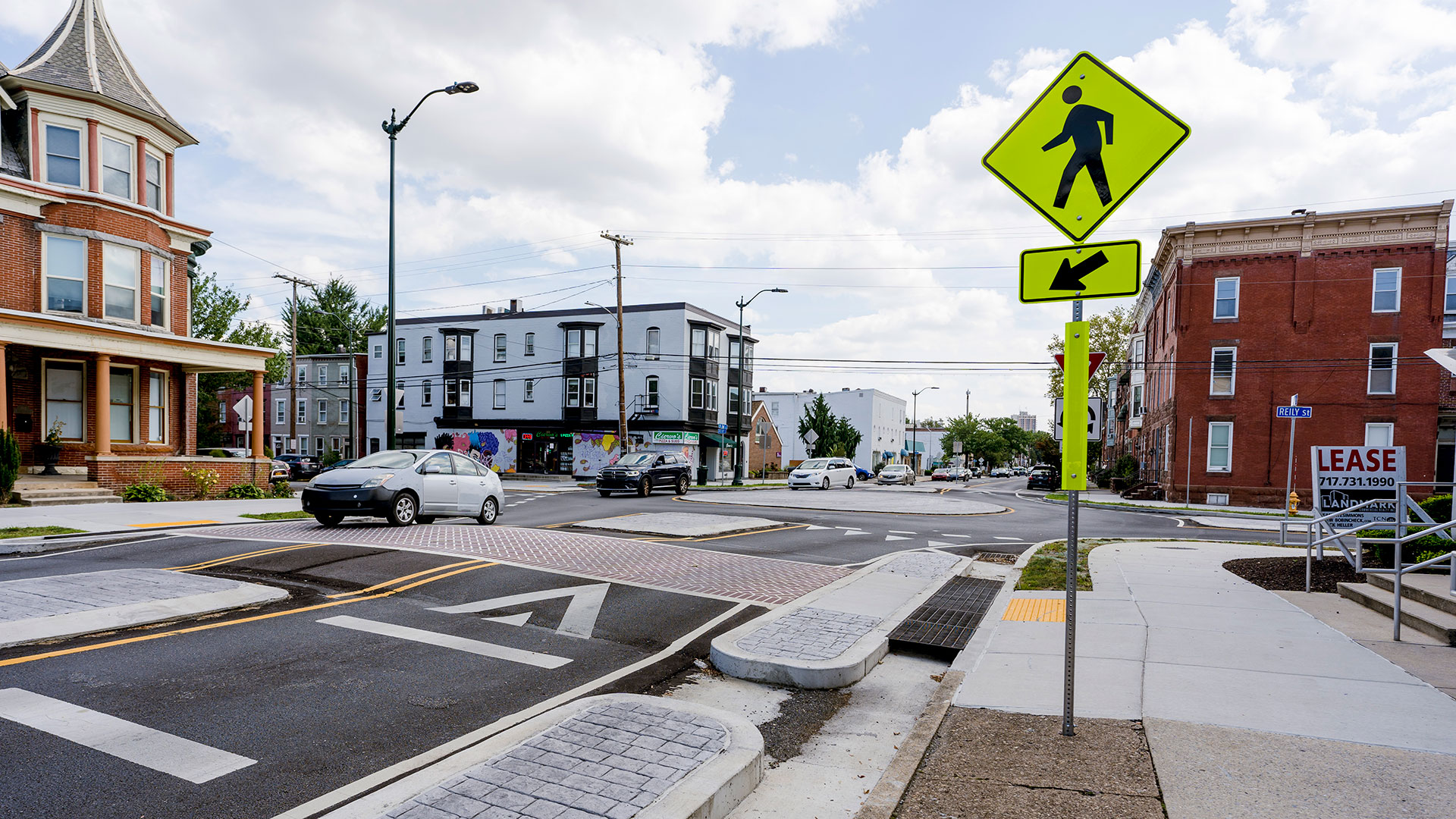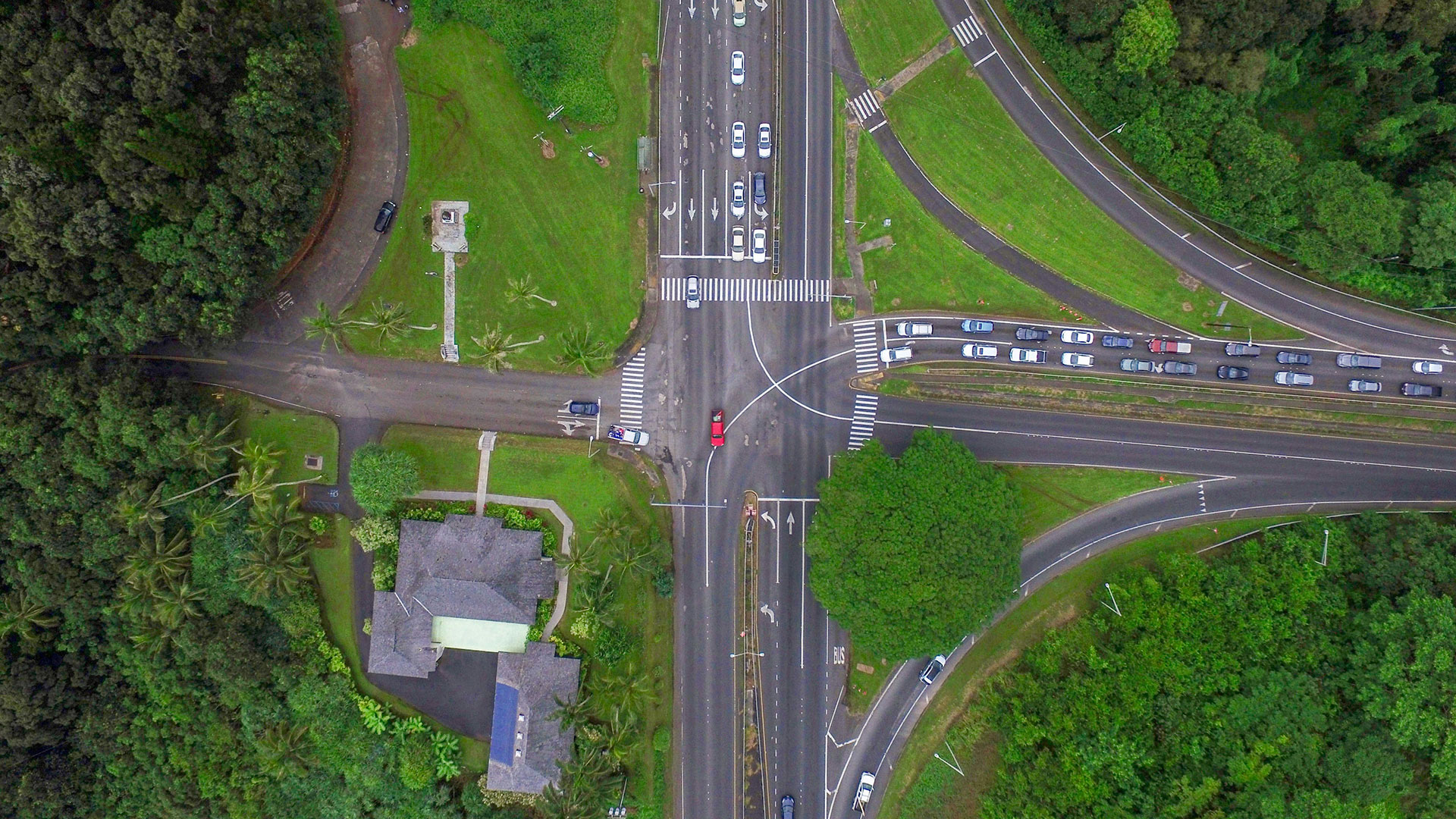February 21, 2024
What You Need to Know About NCHRP Research Report 1087
In February 2024, the Transportation Research Board announced the publication of NCHRP Research Report 1087: Guide for Intersection Control Evaluation. This guide was much anticipated as a resource to bring together the best intersection control evaluation (ICE) practices and tools and equip states in developing their own ICE policies and processes—and it contains quite a few new methods and research-driven recommendations.
Give us five minutes of your time and we’ll tell you why the national ICE guide matters and what you need to know about the contents, including four new and noteworthy topics that could change how states carry out ICE.

The national ICE guide brings together tools and best practices for developing ICE policies, and it contains quite a few new methods and research-driven recommendations.
What’s the Big Deal About ICE?
Intersection control evaluation helps practitioners identify the combination of intersection or interchange form and control that best meets the need of a particular location, or even corridor of multiple locations. (Yes, we briefly considered calling new guide the Isolated or Corridor-Level Intersection and Interchange Form and Control Evaluation (ICIIFCE) Guide, but decided that it’s probably better for everyone if we stick with ICE.)
Are you evaluating an all-way stop? Roundabout? Multi-phase traffic signal? Diverging diamond interchange? Alternative Intersection? An ICE framework walks practitioners through a series of steps to evaluate and compare options using both qualitative and quantitative data. ICE takes into account vehicle safety, multimodal safety, equity, environmental, right-of-way, traffic operations and capacity, and financial considerations, among others.
In addition to supporting more transparent and consistent decision-making, ICE offers agencies the opportunity to change decisions on intersection control and form in the early stages of the project lifecycle, when project costs and public impacts are still low. Read more about the benefits of ICE.
Why Develop a National ICE Guide?
ICE policies, which specify the instances in which ICE must be performed, and ICE processes, which describe the stages of ICE and which tools to employ, are typically developed at the state level, although some local agencies have started to take interest. Prior to the release of the national guide, states lacked a one-stop shop resource for ICE best practices, performance measures, and tools, meaning that every state had to figure out their own process, and they look pretty different state to state as a result.
The release of NCHRP Report 1087 aims to bring consistency to ICE processes and chart a clear path for states that have not yet developed an ICE process. It also, because it includes a good deal of new research and methods, is a valuable resource for states that already have ICE processes, as well as local agencies that are also called upon to evaluate intersections holistically and equitably.

The new ICE guide charts a path for states looking to develop a new ICE process or update an existing process, and also has value for local agencies making decisions about their intersections.
What’s in the National ICE Guide?
Thematically, the guide is broken into two main sections:
- The first four chapters are about process. They provide the fundamentals on ICE, offer an eight-step framework for implementing a new ICE process, and describe a typical ICE process. This information is beneficial not only to agency leaders who are considering developing a new ICE process, but also to those who are looking to improve an existing ICE process.
- The fifth chapter and following material dives into practical detail about intersection forms, control types, analysis methods, and analysis tools. One of the gold mines of the guide is the appendix, which provides an overview of 28 intersection and interchange form and control types.
Along with the guide, our team created or updated nine spreadsheet tools that practitioners can use as they perform ICE evaluations and analyses. These tools can be used to recommend an initial list of intersection forms to study, estimate an intersection’s volume-to-capacity ratio, document an equity evaluation, calculate design flags for pedestrian and bicyclist safety, compare vehicle safety performance, and estimate life-cycle costs. Don’t skip them over! They’re available as links on the National Academies website.
4 New Recommendations in the National ICE Guide
The guide contains several new recommendations and methods based on the latest research. Here are four key principles from the guide that will shape how ICE processes are developed moving forward:
1. Use of a two-stage process. Currently, some states use one stage for ICE, some use two, and some use three. The national guide offers a clear recommendation to use a two-stage process. Having two stages (a high-level screening followed by a more detailed assessment) ensures states will start by looking at a range of options and use a more objective filtering process, rather than coming in with a short list already in mind. Functionally, the third stage is a continuation of the second, so the process is more streamlined when these are combined.
2. Early exits and fast-tracking. While ICE should be thorough, it’s also a rational process, and it’s inefficient to spend time assessing options that clearly don’t make sense for the intersection at hand. Early exits eliminate alternatives that are not feasible given the context. For example, a large interchange won’t fit in a constrained urban intersection, and two large arterials aren’t going to meet at a four way stop. Fast-tracking means stage two can be skipped if a clear solution emerges from stage one. So if all indicators point to that low-speed and safe single-lane roundabout, you’re clear to proceed without lots of Stage II analysis.
3. Volume to capacity ratios as pass/fail, not a ranking.Currently, most existing ICE processes involve a ranking of alternatives based on volume to capacity ratio—the extent to which a design is likely to be over or under capacity. The new guide doesn’t eliminate this metric, but instead recommends using it as a pass/fail test. Operationally, there is very little difference between a volume to capacity ratio of 0.6 versus 0.7 versus 0.8, and ranking intersection forms in this way creates bias toward choosing the alternatives at the top of the list when there could be others further down the list in which the volume to capacity ratio is still perfectly acceptable. If the ratio is too high or too low (i.e. too many lanes), throw it out; otherwise, the guide looks to other performance measures (such as safety) to drive rankings.
4. Four new screening methods. To further equip agencies to use ICE as a way to (as much as possible) objectively account for safety and equity in comparing intersection forms, the new guide provides four entirely new methods:
- Stage 1 Vehicular Safety Screening based on SSI
- Stage 1 Pedestrian and Bicyclist Safety Screening Method
- Stage 2 Planning-Level HCM Methods for Alternative Designs
- Stage 1 and 2 Equity and Context Screening Method
Each of these methods brings something new and important to the overall process. Stay tuned for a follow-up article where we dive into detail on them!
Explore NCHRP Research Report 1087
Our five minutes are up—the next step is for you to check out the guide for yourself! You can download the ICE guide, and access the suite of tools, here on the National Academies website.
We at Kittelson were honored to lead the development of the guide, and are grateful to our teaming partners, as well as the NCHRP panel for their invaluable contributions and guidance throughout the process. We have also had the privilege of supporting several states in developing ICE policies and processes and customizing tools based on their identified performance measures. If you’d like to talk about how to translate the recommendations from the guide into a process customized to your state, we’d be glad to start the conversation!
